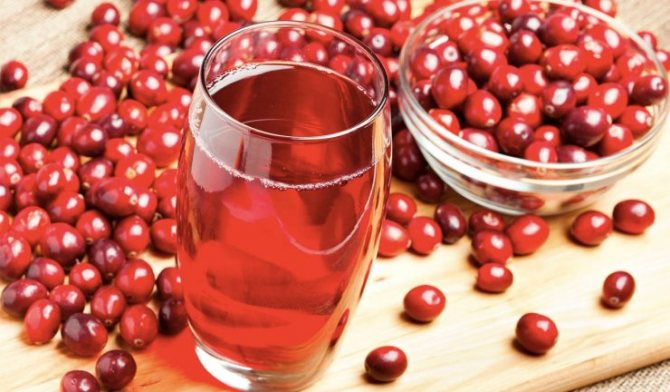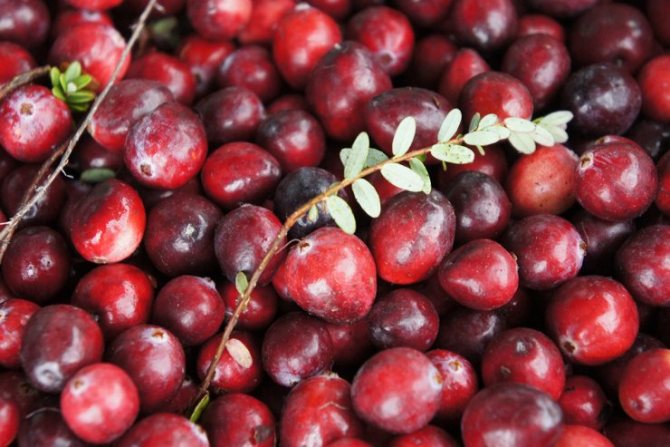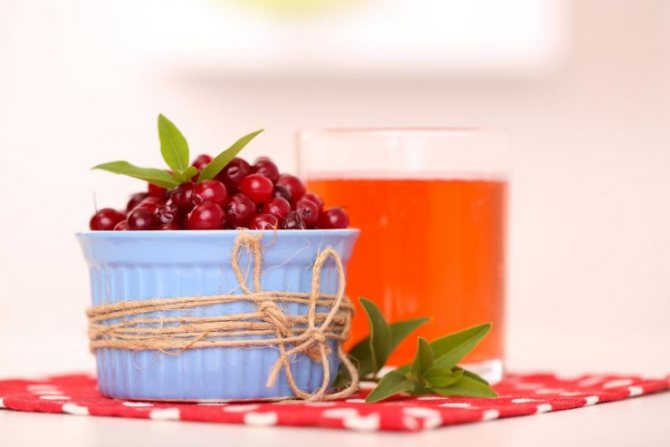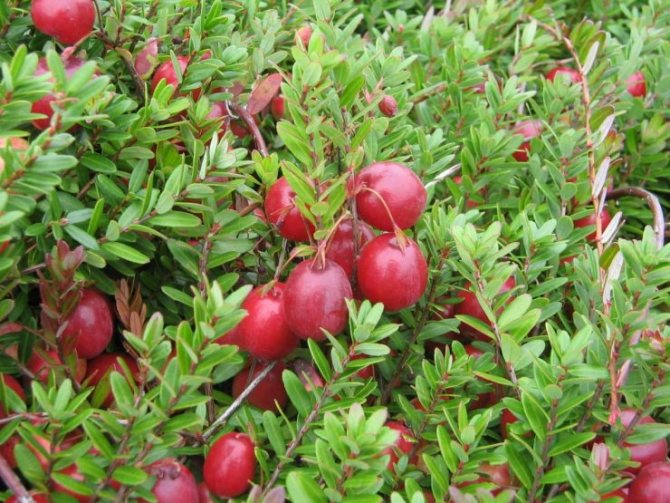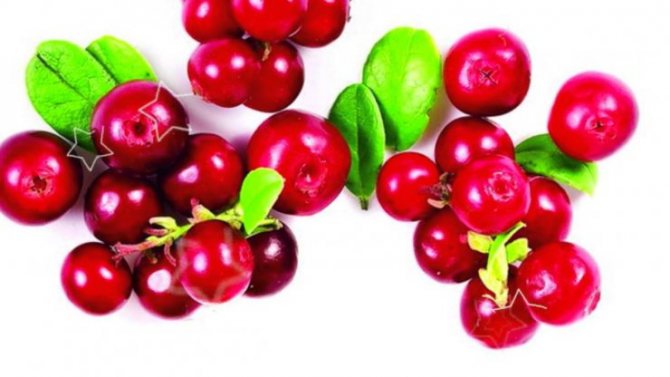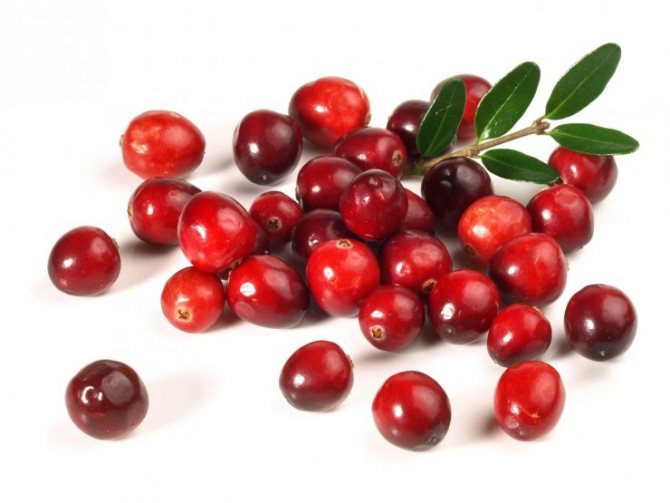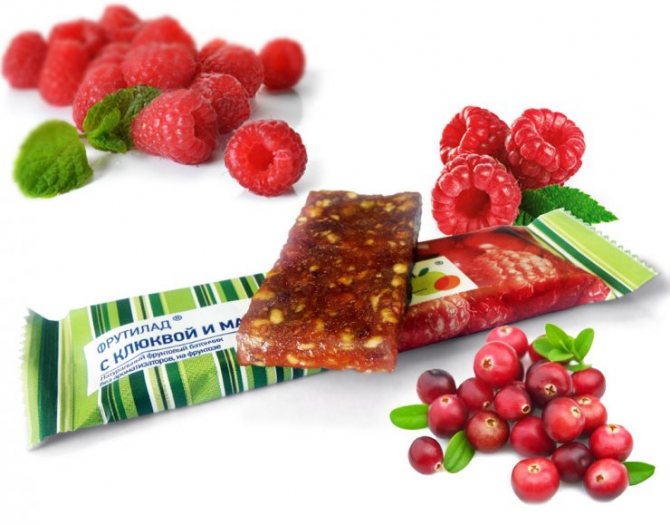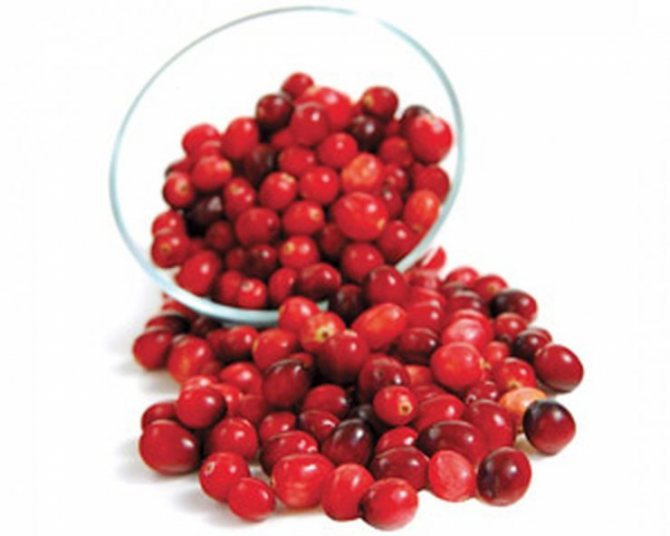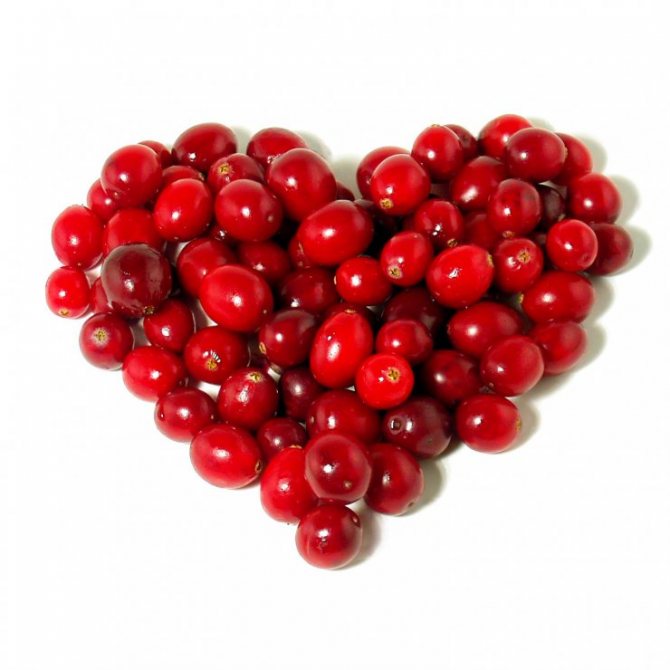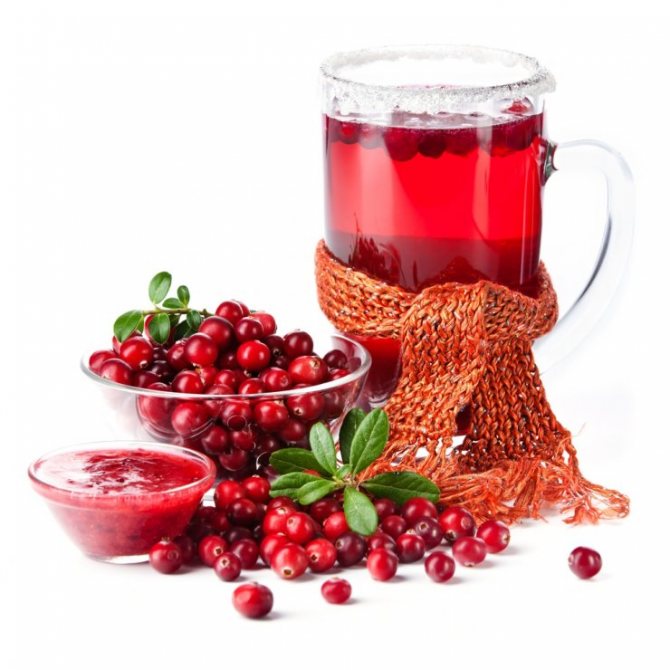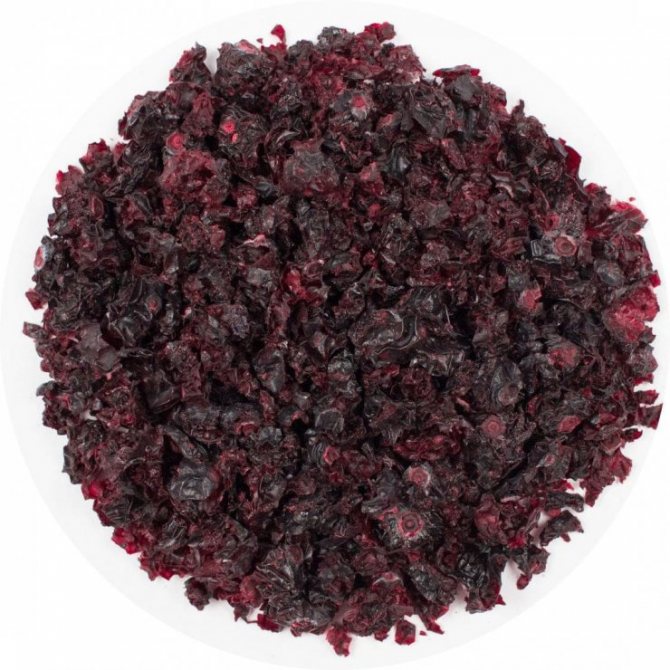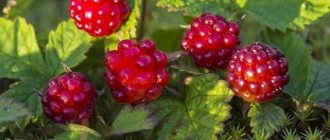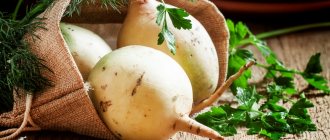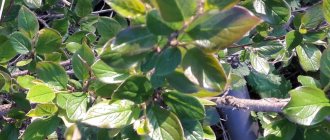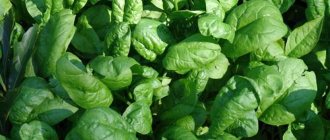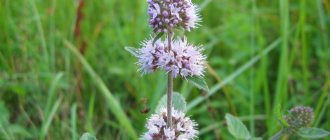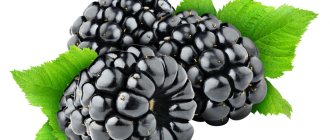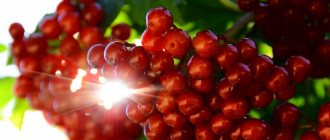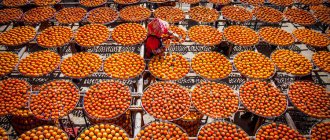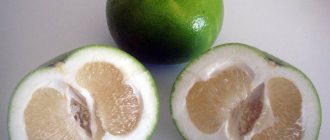Cranberries (Latin Oxycoccus) are a group of plants in the genus Vaccinum (Latin Vaccinium). Most botanists consider them as a subgenus, and some distinguish them as a separate genus. Plants are found in the Northern Hemisphere, in regions with a temperate climate. They grow in forests, swamps and moorlands. The most berry places are in Russia and Scandinavia. Cranberries prefer moist, nitrogen-rich, moderately acidic or acidic soils.
The scientific name Oxycoccus is derived from the Greek words oxys and kokkos, which translate as "sour" and "berry."

Photo: What does Cranberry look like?
Cranberries - general information and varieties
This plant of the Heather family can be found throughout the Northern Hemisphere. Cranberries belong to the Vaccinium genus and are closely related to bilberries, blueberries and lingonberries.
There are four types of wild cranberries:
Ordinary
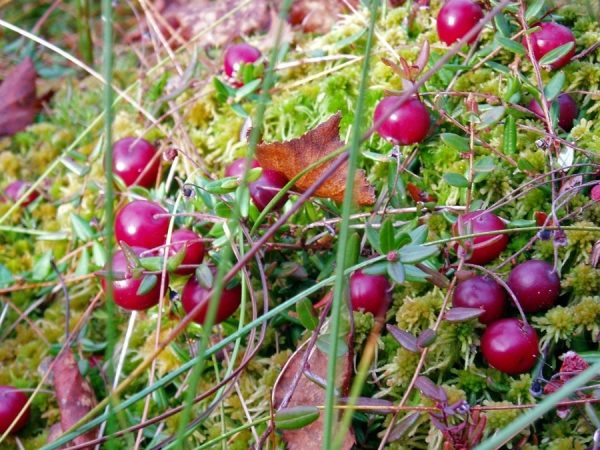

Common cranberry
An evergreen shrub that grows in the northern and temperate latitudes of the Eurasian continent. Creeping shoots, long (up to 80 cm), thin, woody, brown in color. The flowering shoots are raised, the leaves are ovate, 5-10 mm long, petiolate, alternate. The color of the leaf plates on top is dark green, below it is gray, with a waxy coating. Blossoms in May-June with reddish-pink drooping flowers. It ripens by September. Fruit diameter - up to 16 mm.
Small-fruited
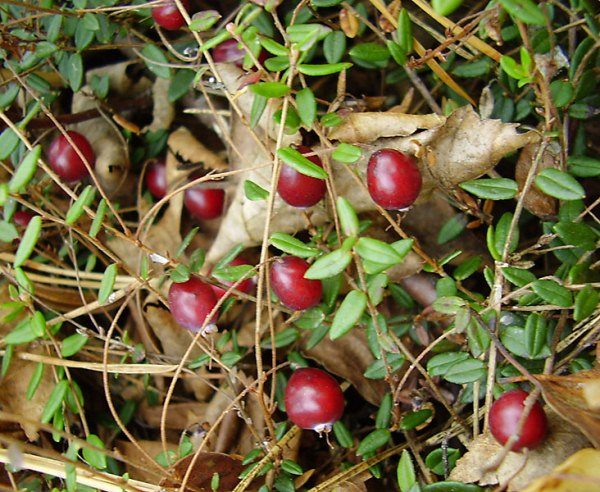

Small-fruited cranberry
Another Eurasian species, Pleistocene relic. Shoots are creeping, filiform, about 30 cm long. Leaves are small, 3-6 mm, leathery, dark green above. The underside of the leaf plate is gray. The flowers are small, pink. Fruits 5-8 mm in diameter, ripen from late July to August... The species is listed in the Red Data Books of many regions of Russia (Voronezh, Lipetsk, Ryazan, etc.).
Large-fruited
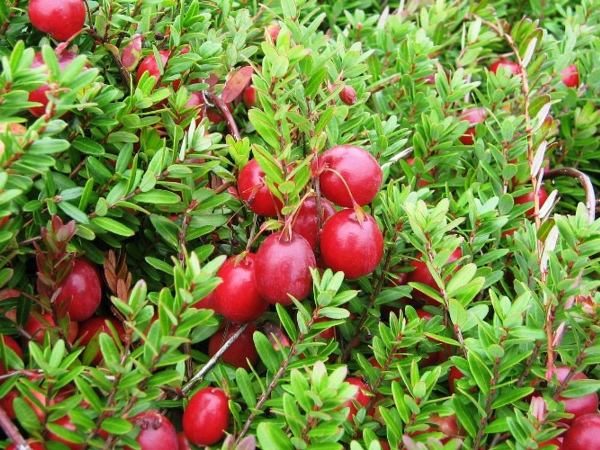

Large-fruited cranberry
It is widespread in Canada and the USA, where the northern border of its growth lies along the 51st parallel. The leaves of the shrub are oblong, become burgundy in autumn, restore their green color in spring. Fruits are large - up to 25 mm in diameter, carried on long shoots to a height of up to 30 cm... Begins to sing in the middle of September. On the basis of American wild-growing cranberries, cultivated large-fruited varieties are bred.
Vaccinium red-fruited
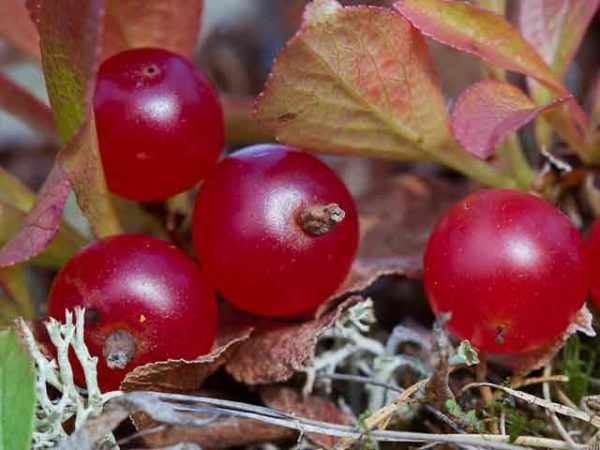

Cranberry Vaccinium red-fruited
It has two subspecies. The first is common in North America in the South Appalachian region. The second is in East Asia (China, Japan, Korea). Deciduous shrub found in partial shade mountain forests... The berries ripen in late August - mid September.
The Latin name for cranberries - Oxycoccus - means "sour ball". She also has many popular names: spring, zharavik, zharavitsa, marsh grapes, bear berries, etc. In some places, cranberries are called "zhuravina". Most likely, this word reflects the similarity of the flowers of the plant with the head of a crane.
Fruits of all types of cranberries are prized for their high content of vitamin C and anthocyanins. It is an indispensable natural remedy for inflammatory urinary diseases.... Many scientists believe that cranberries should be included in the list of essential foods for cancer prevention.
The beneficial properties of cranberries are known not only to people.It has long been noticed that bears, foxes and wolves visit cranberry meadows with pleasure, trying to maintain their strength during a long winter or spring.
Difference from lingonberry
Often, uninitiated people confuse our today's heroine with another representative of the heather - lingonberry. And in fact, at first glance, it is rather difficult to distinguish them, but, nevertheless, by looking closely, you can easily identify one or another berry.
The first sign of the difference between cranberries and lingonberries is the place of growth. As a rule, lingonberry chooses drier and higher areas compared to its cousin.
By the way! Bearberry is also similar to cranberries and lingonberries, the berries of which have no special nutritional value, and the leaves are used only for medicinal purposes in the form of teas, in particular as a diuretic.
The second difference between the two berries is the ratio of the size of fruits and leaves. In lingonberries, they are approximately equal in size, while in cranberries, berries prevail. In addition, lingonberry leaves are more rounded in shape.
The third feature is the size, and this applies to both the plant as a whole and the size of the berries. Lingonberries are much shorter than their sister, the growth of its bushes does not exceed 15-20 centimeters, and the size of the berries is only 8 millimeters.
The following difference can be seen during the flowering period of berries. Unlike cranberry flowers on long pedicels, the latter are short in lingonberries.
Our help! These berries are similar not only in nutrition from mushrooms, but also in the method of reproduction and distribution. There is such a phenomenon as ornitochoria - the spread of seeds by birds.
How and where does cranberry grow?
The Delaware Indians had a legend that cranberries grow in places of battle of ancient giants - where their blood was shed. This makes sense, in part. Cranberries are a berry of peat, tundra and sphagnum bogs, and their age ranges from 12 thousand to 400 million years.
In Russia, cranberries grow in damp coniferous forests, swampy lowlands, on old peat bogs... It is widespread in the European part of the country, in Karelia, Kamchatka, Sakhalin, and Siberia. The northern border of its range lies in the Arctic Circle (forest-tundra zones). From the south, the area of cranberry growth is limited by the 62nd parallel and coincides with the boundaries of the spread of swamps.
For normal development, cranberries require a lot of light and clean water. In ecologically unfavorable places, it grows poorly, therefore, near large cities, cranberry "Palestinians" cannot be found. This berry is not demanding for the mineral composition of the soil.... The roots of the shrub form a symbiosis with soil fungi, which help the plant to "get food". Cranberry chooses soils more acidic, easily transferring the pH to 2.5.
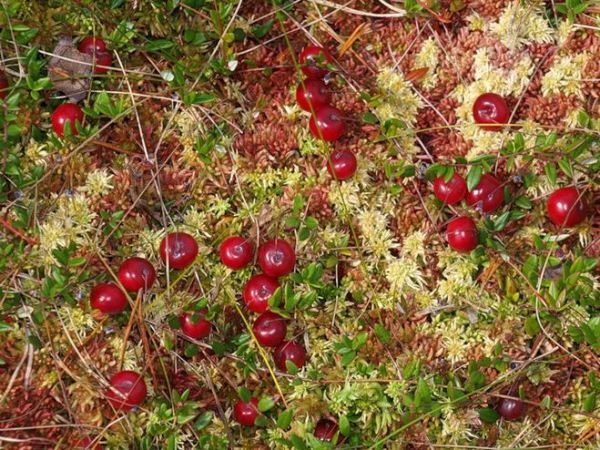

In Russia, cranberries grow in swamps and damp coniferous forests
Cranberry bushes are capable of forming rugs, spreading over the moss and intertwining with shoots. It can be quite a long distance from one cranberry "Palestine" to another. Sometimes on springy moss and viscous mud you have to walk several kilometers.
Contraindications
There are no significant contraindications for use in cranberries. You should not use it with individual intolerance, with increased acidity of gastric juice. It will also be harmful in case of acute diseases of the gastrointestinal tract and exacerbations of chronic ones.
Recipes
- Various fruit drinks and hot drinks can be prepared from cranberries, which help with colds and a number of other diseases. More complex recipes with this berry are of no less interest.
- In case of myocardial infarction, the following composition will help to recover. One kilogram of cranberries is thoroughly chopped. You can use a mixer or meat grinder. Two hundred grams of garlic are crushed into gruel and added to the cranberries.They also put half a glass of liquid honey there. Everything is thoroughly mixed and left for three days in a cool place. Take one dessert spoon before meals.
- With gastritis with low acidity of gastric juice and pyelonephritis, the following mixture is prepared. Grate two hundred grams of fresh potatoes on a fine grater. The mass is left for a couple of hours, and then the juice is squeezed out. Squeeze juice from fifty grams of cranberries and add it to potato. Three teaspoons of granulated sugar are put there. The juice is divided into two parts and drunk twice a day.
Cranberry Dishes
When does the berry begin to ripen and the timing of collection in Russia?
Cranberries can be harvested in summer, autumn and spring. Most often, they begin to collect it in the fall - in September-October, before frost... However, a distinctive feature of the cranberry fruit is the ability to winter on the plant. The berry is not damaged by frost, but only accumulates sugar. That is why many people prefer to pick cranberries not in autumn, but in spring.
The chemical composition in percentage per 100 g of fruit is as follows:
| Dry matter | 11,75 |
| Water | 88,25 |
| Sugar | 2,84 |
| Lemon acid | 2,45 |
| Cellulose | 2,01 |
| Pectin | 0,73 |
| Nitrogenous substances | 0,32 |
| Ash | 0,22 |
The ratio of these elements varies depending on the growing conditions and the time of picking the berries.
Summer cranberries are hard, white or incompletely colored... Over time, it matures, but retains a lot of acid and does not gain the right amount of sugar. Such a berry is neither tasty nor juicy. Ripe cranberries contain less nutrients, more bitterness, and are poorly stored.
When picking, pay attention to the color of the fruit. Experienced pickers prefer cranberries that have taken on a dark purple hue. It is believed that in such a berry the concentration of biologically active substances is maximum.
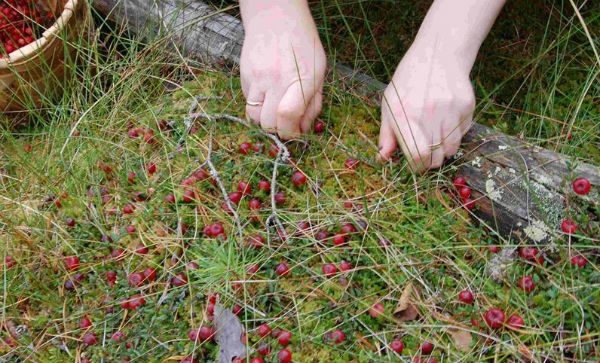

Collecting cranberries in the fall
Spring cranberries that have wintered under the snow are much sweeter than autumn cranberries, but they almost do not contain vitamin C. There is more pectin in the berries of the autumn harvest., which matters if the fruit is intended for processing or confectionery use. On the skin of autumn cranberries, microorganisms responsible for fermentation processes remain active. Therefore, such a berry is better suited for winemaking.
Due to the reduced percentage of acid, snowy spring cranberries are less well stored.... The transportability of autumn berries is also better.
The condition of the swamp itself imposes restrictions on the spring harvest. There is less water in autumn, which means the risk of getting bogged down or falling through is much lower.
Useful properties of berries
Living far from big cities allows you to preserve the naturalness of this plant. The toxins simply cannot get inside. It is believed that this is a real storehouse of minerals and vitamins.
In its composition you can find:
- organic acids;
- sugar;
- vitamins;
- phenolic acids;
- anthocyanins;
- fructose;
- pectins;
- betaines;
- catechins;
- leukoantizans.
100 g of fresh product contains only 26 kcal. But the calorie content increases significantly if this berry is dried. In this case, 100 g will already have 308 kcal.
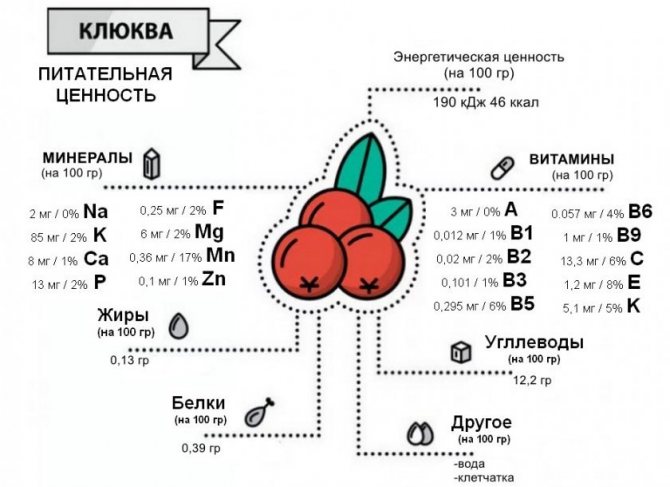

The wide range of components is mostly based on the habitat of the shrub. The fruits have a truly miraculous effect on humans.
- Among the positive effects are:
- prevention of premature aging;
- cleansing the body from the negative effects of free radicals;
- prevention of the emergence of cancer cells;
- elimination of violations of the functioning of the cardiovascular system;
- lowering cholesterol;
- cleansing blood vessels from cholesterol plaques;
- prevents the formation of blood clots.
This is not a complete list of the influence that this medicinal berry carries.
Important! The presence of such a component as quercetin in the composition has a preventive effect against cancer on the large intestine and mammary gland.
How are cranberries harvested?
In industrial cultivation, the harvesting of cranberries is more often mechanized. Plantations are set up in special peat pits-clusters. When the harvest time comes, water is piped to the clusters through pipes, and the plantation is flooded to a depth of about half a meter..
Cranberries are light, so they float to the surface. Then a caterpillar harvester equipped with combs at the front and rear is released to the plantation. The machine picks berries, which you just have to collect with nets.
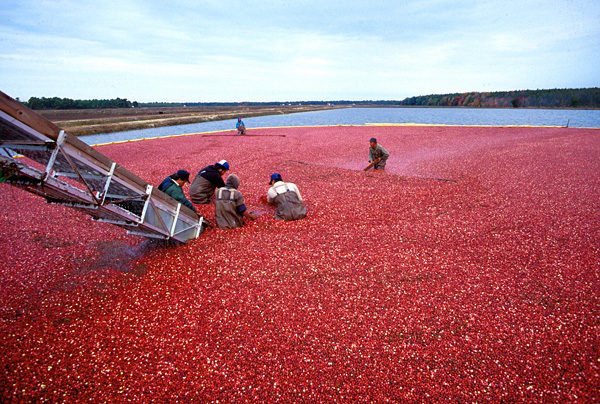

Mechanized harvesting of cranberries on an industrial plantation
And here manual picking of cranberries - hard physical labor... After many hours of walking in the swamp with mosquitoes and horseflies, the collector has to squat for a long time, pushing the plexus of the shoots apart and picking the berries one by one. Therefore, many are trying to facilitate the process with the help of special devices.
Now on sale you can find many models of fruit pickers for berries. Some craftsmen independently make comb scoops that allow you to quickly "comb" the cranberry meadows. but in many regions, the legislation of the Russian Federation imposes a restriction on this collection method... The fact is that "chees" can severely injure plants, breaking off leaves and shoots. Therefore, when going for cranberries, you need to familiarize yourself with the local collection rules.
Collecting cranberries with hand harvesters in the protected areas is strictly prohibited!
Against inflammation
Viral and bacterial infections are suppressed at the early stages of development thanks to the vitamins contained in the product.
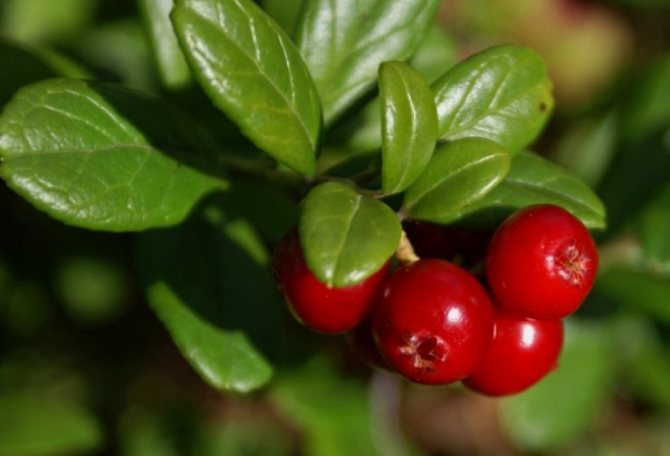

Cranberry juice, due to its high acidity, is used as an external agent for the treatment of various diseases, due to its disinfectant and anti-inflammatory properties.
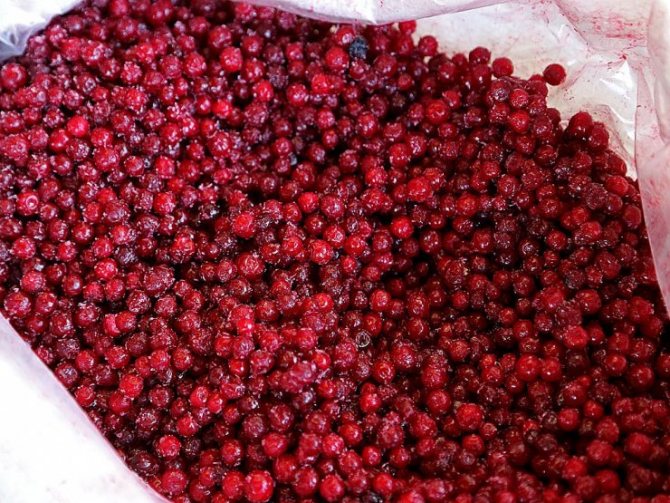

Sedative
The indisputable benefit of cranberries for humans is to stabilize metabolic processes and stimulate brain activity.
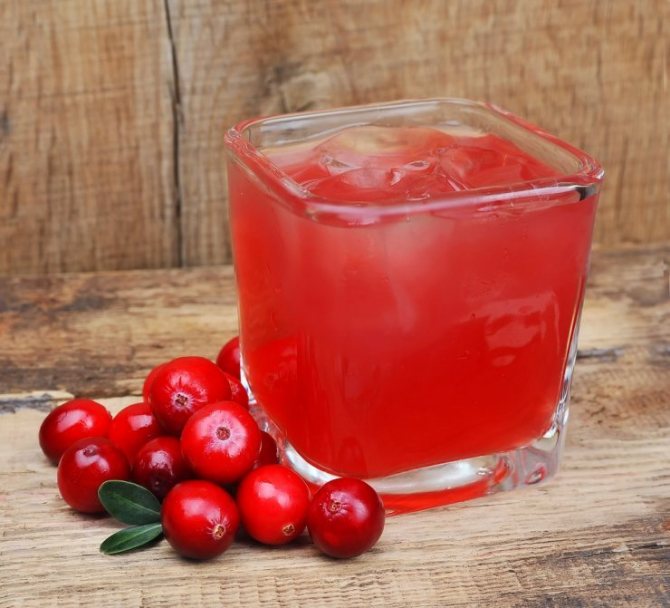

Due to the regulation of acid-base balance and normalization of the brain, cranberry is recognized as a natural sedative that can replace chemical and medication.
Cleansing blood vessels
Tannins, flavonoids and fiber contribute to the elimination of toxins and toxins from the tissues and cells of the human body.
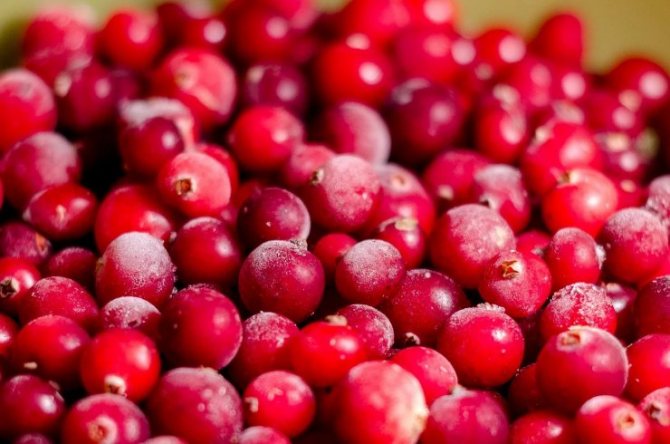

Mild and natural cleansing allows you to comprehensively improve the body and normalize its activity, taking health measures through internal regeneration and restoration of health.
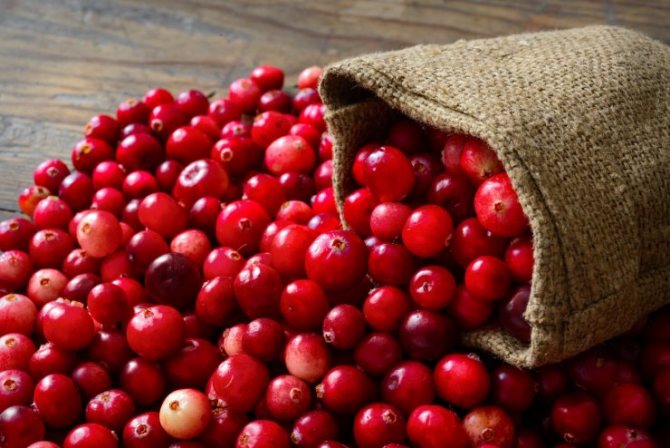

We recommend reading:
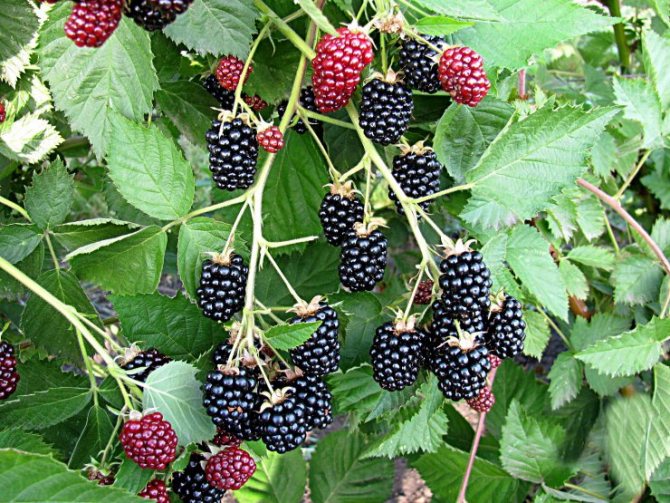

Useful properties of blackberries - medicinal properties and contraindications for use. Cooking options and methods for storing berries (video and 100 photos)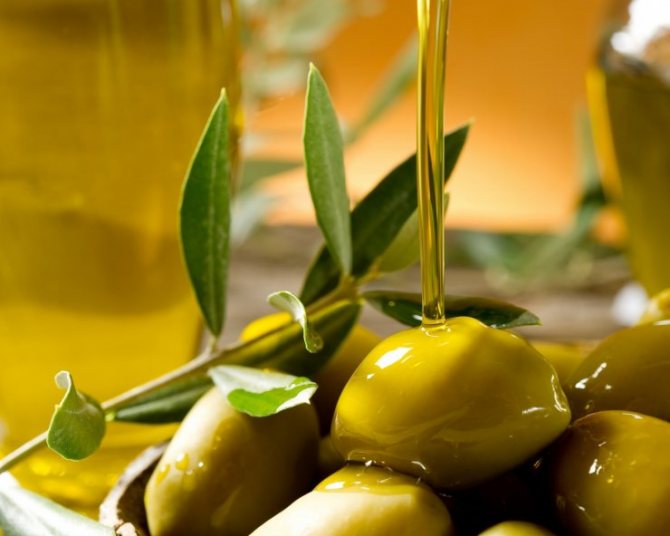

The benefits of olives: composition, useful properties, calorie content and features of use in the diet (90 photos + video)
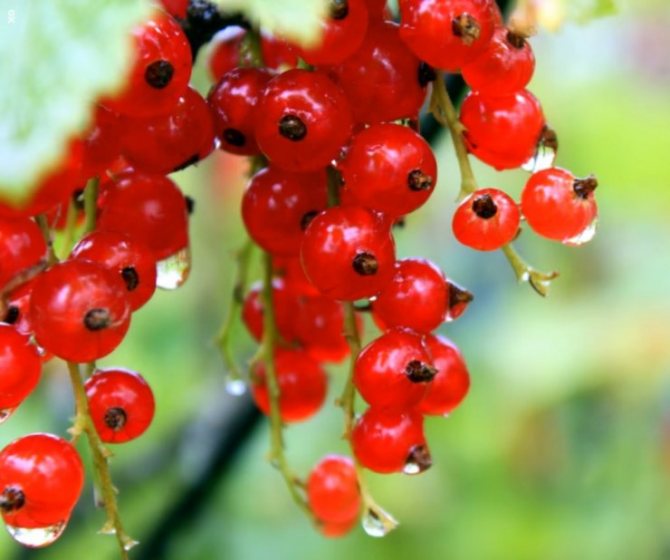

The benefits of currants - harm, useful properties, a review of vitamins and minerals (110 photos and videos)

